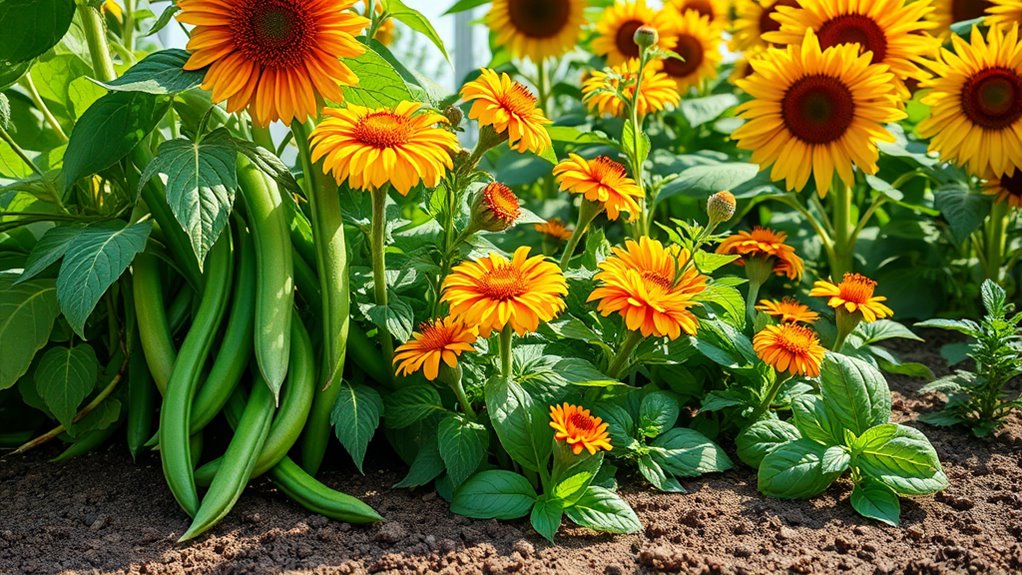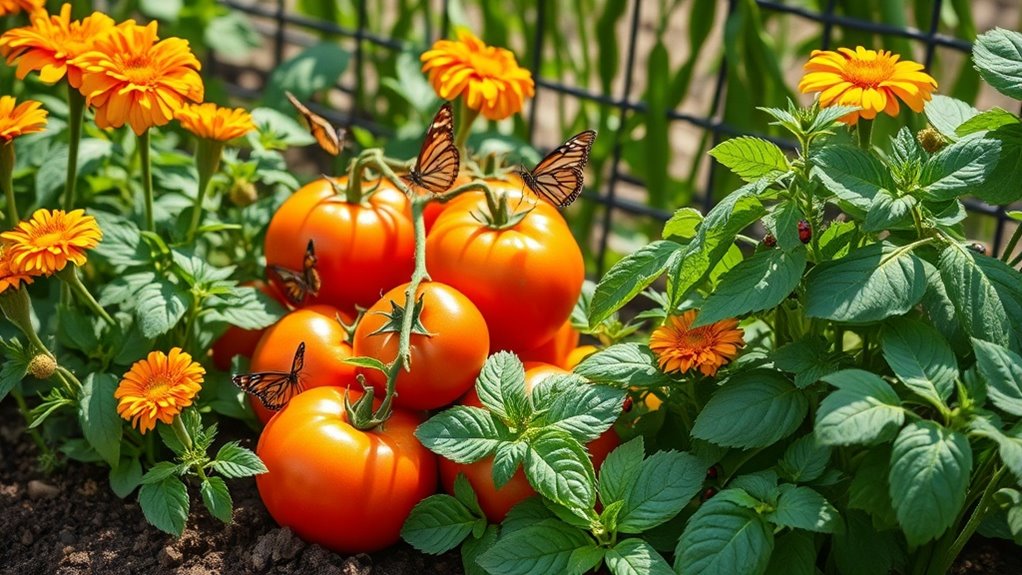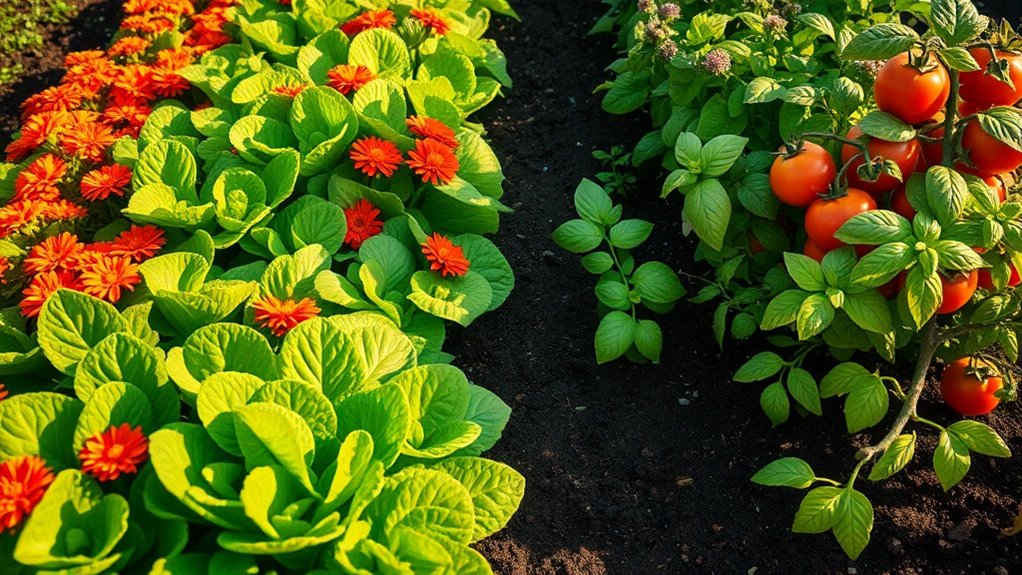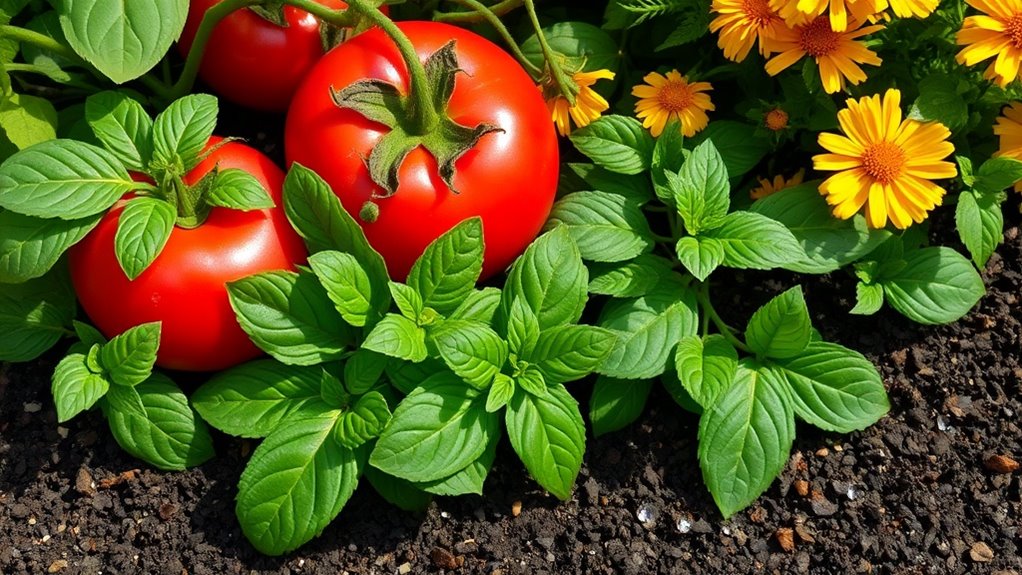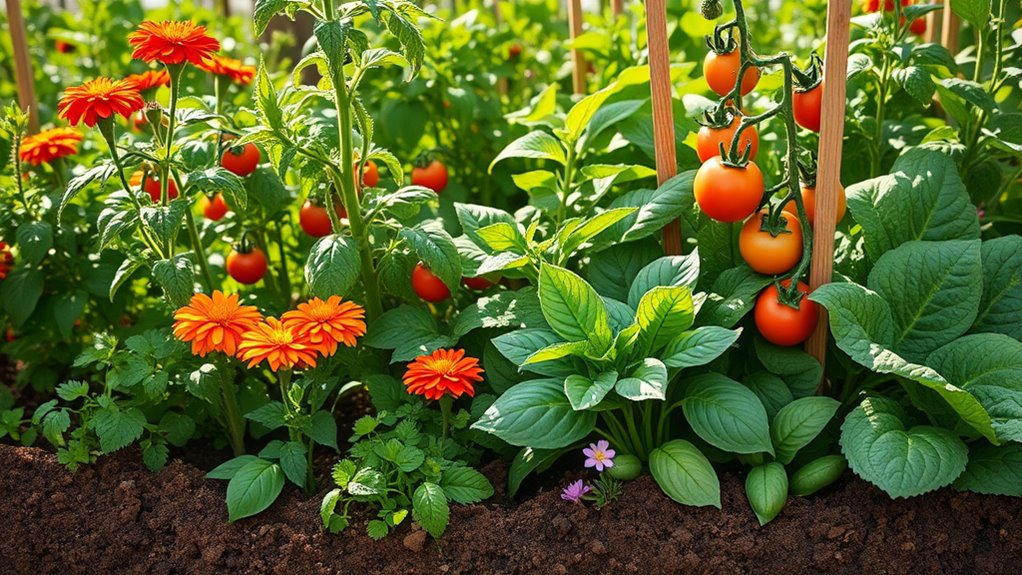Why Companion Planting Changed the Way I Garden Forever
Companion planting is like weaving a tapestry; each plant contributes to a greater whole. It shifts your perspective, revealing how diverse species interact within your garden. This method doesn’t just deter pests or enhance flavors; it cultivates a balanced ecosystem that supports soil health and beneficial insects. As you explore these intricate relationships, you’ll find practical strategies to maximize your garden’s potential—and perhaps discover insights you hadn’t considered before.
Understanding the Basics of Companion Planting
Companion planting is the practice of strategically placing different plant species in proximity to each other to enhance growth, deter pests, and attract beneficial insects. By understanding the basics, you can achieve companion planting success. Certain plants release beneficial compounds that improve soil health, while others repel harmful insects. This strategic method not only boosts yield but also creates a balanced ecosystem within your garden, ultimately leading to greater biodiversity in your garden community.
My First Experience With Companion Planting
When I first ventured into companion planting, I quickly realized how much potential lies in pairing the right plants together for mutual benefit. I experimented with marigolds and tomatoes, noting marigolds’ ability to deter pests. Observing the health of my tomato plants encouraged me to explore more combinations, revealing the intricate relationships in nature. This experience truly transformed my approach to gardening, as I discovered the benefits of mutual plant relationships that contribute to healthier gardens.
Successful Plant Pairings That Changed My Harvest
Although you might be unfamiliar with the concept of plant pairings, certain combinations can dramatically impact your garden’s yield.
For instance, pairing basil with tomatoes not only enhances flavor but also repels harmful pests. Similarly, interplanting carrots with onions can confuse pests, protecting both crops. Additionally, basil’s ability to repel harmful pests makes it an essential companion for tomatoes, as it significantly contributes to healthier plants.
These strategic pairings not only boost harvest quality but also optimize space and nutrient use in your garden.
The Science Behind Companion Planting Benefits
Understanding how plant pairings improve garden yield leads to an intriguing exploration of the science behind companion planting benefits. Various interactions among plants enhance growth, repel pests, and improve soil health.
By analyzing these relationships, you can:
- Promote beneficial insect populations
- Increase nutrient availability
- Optimize space utilization
- Enhance flavor and yield
These factors contribute significantly to a thriving garden ecosystem. Additionally, utilizing companion planting strategies can significantly boost overall garden productivity and resilience.
Tips for Getting Started With Companion Planting
As you embark on the journey of companion planting, it’s essential to consider a few key strategies that will set the foundation for success.
Start by researching compatible plants that enhance growth and deter pests. Additionally, incorporating common mistakes that gardeners make can help you avoid pitfalls and ensure a thriving garden.
Plan your garden layout carefully, grouping plants with similar needs. Finally, monitor your plants regularly to evaluate their progress and make adjustments as necessary for optimal results.
Transforming Your Garden: Long-Term Gains From Companion Planting
When you embrace companion planting, you’re not just enhancing your garden for a single season; you’re cultivating a thriving ecosystem that offers long-term benefits.
This method fosters resilience and productivity in your garden by:
- Increasing biodiversity and resilience against pests
- Improving soil health and nutrient availability
- Enhancing pollination and yields
- Promoting natural growth harmonies among plants
These gains transform your gardening experience significantly.

